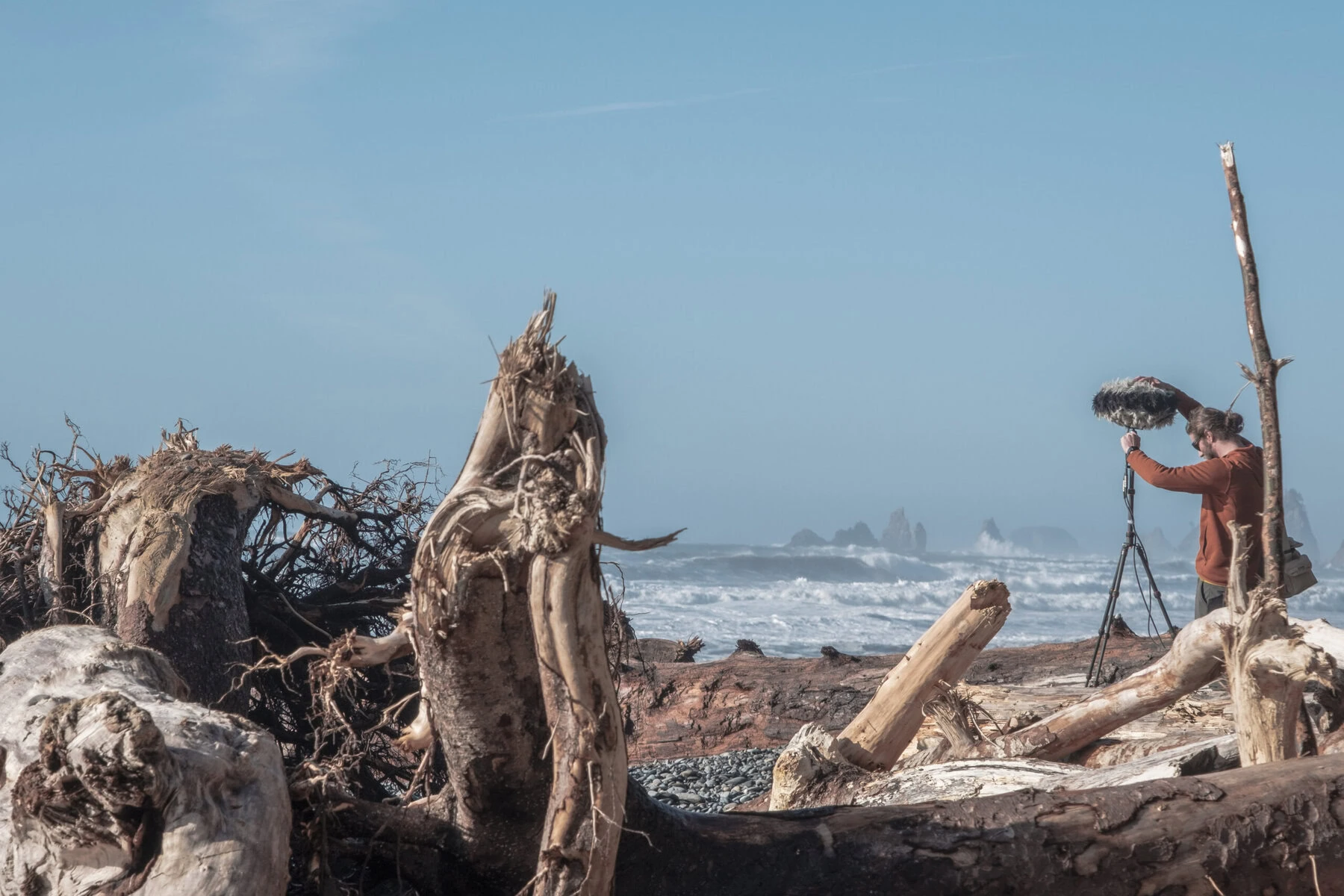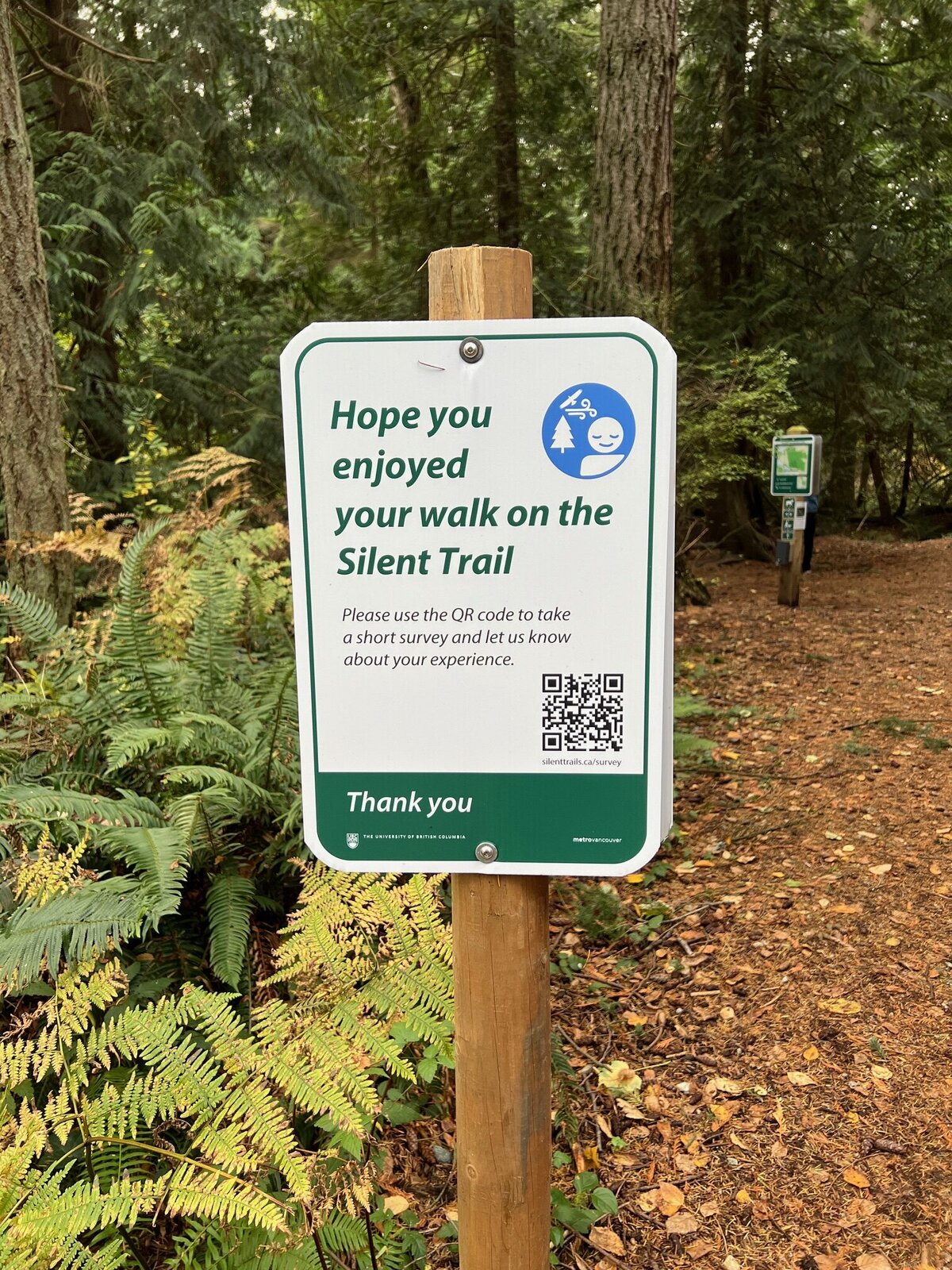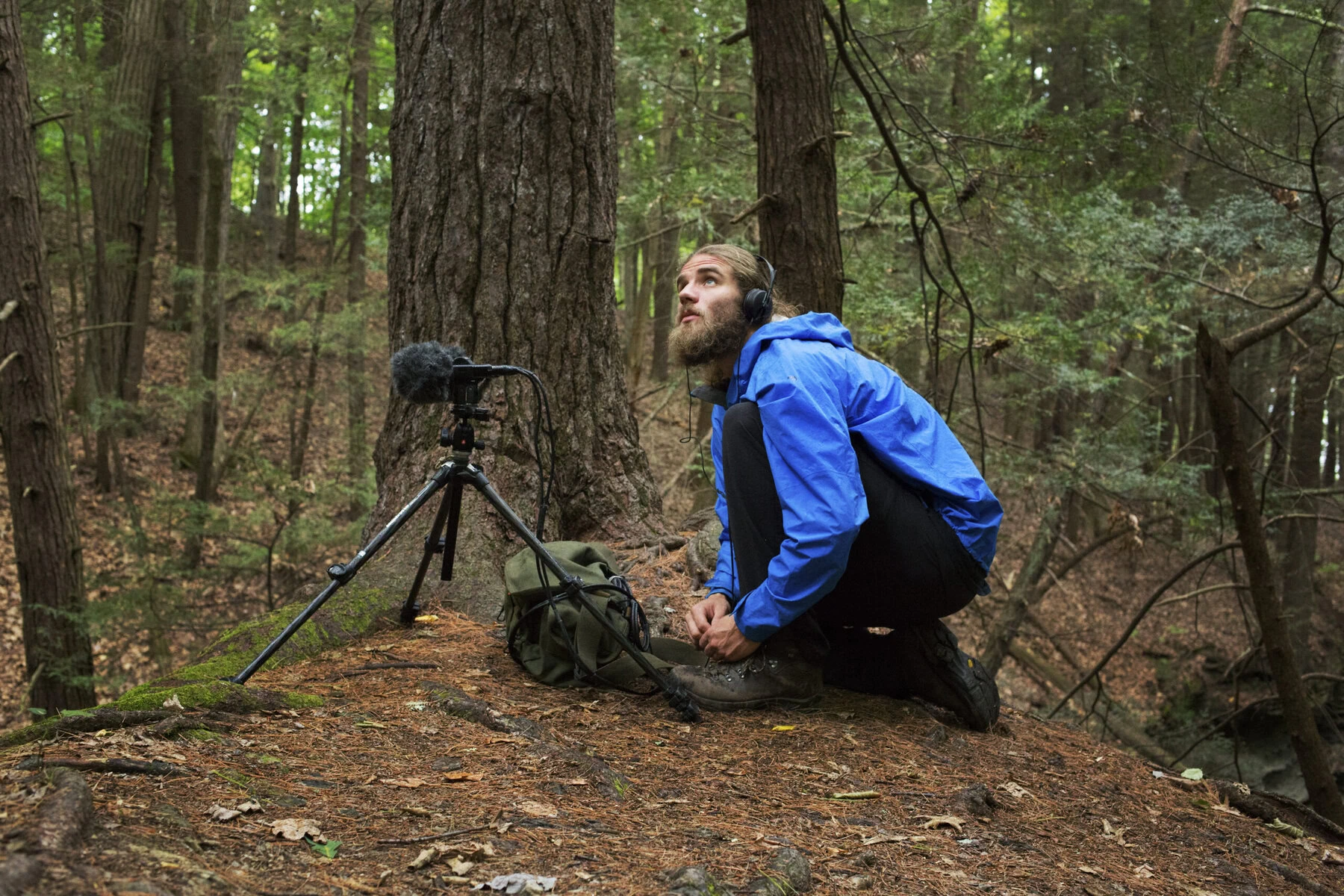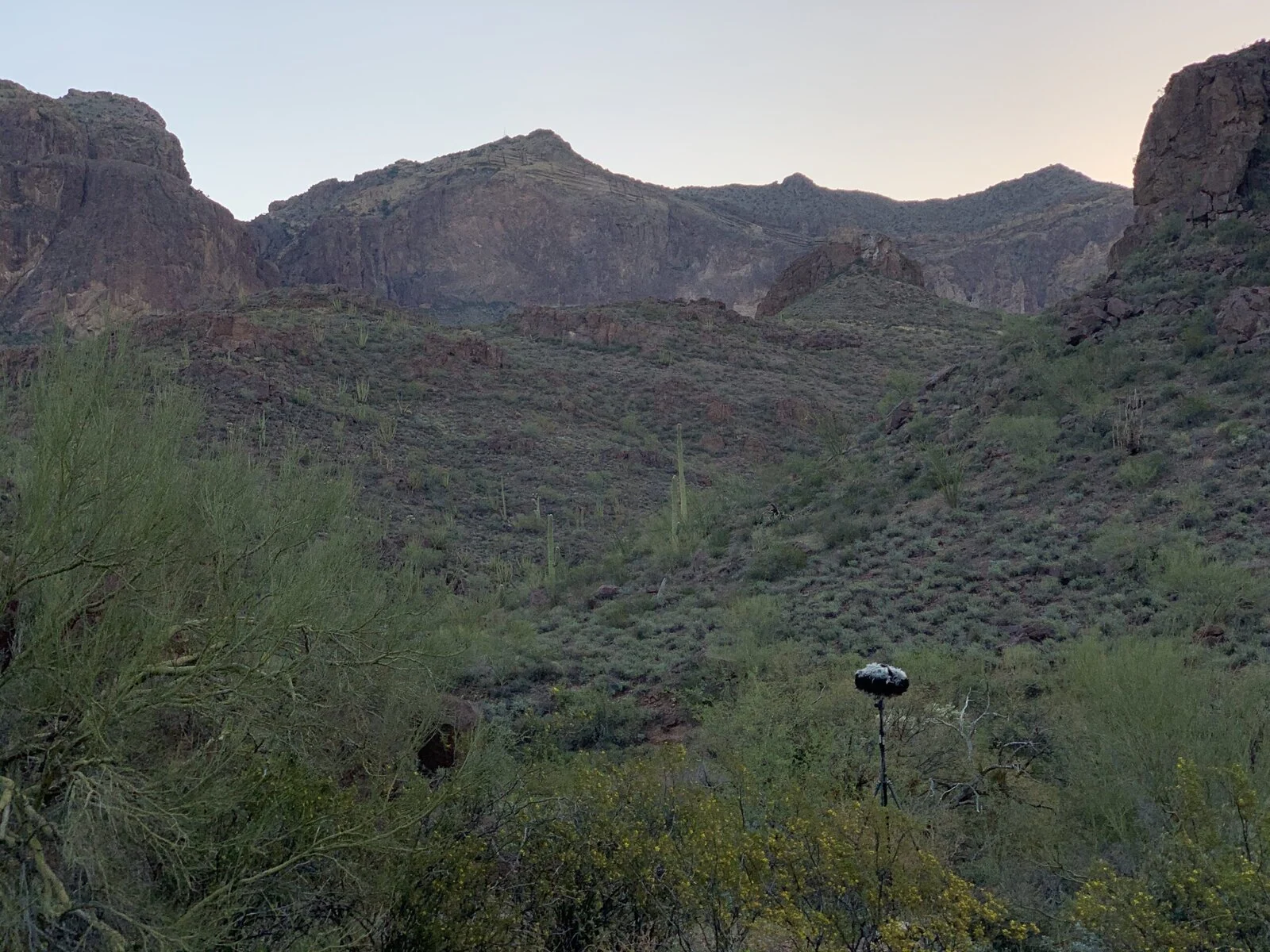In 2020, when a global pandemic silenced the drone of aircraft and drum of traffic, a new soundtrack of birdsong, rain falling and the buzz of bees traveling from plant to plant emerged. This lack of man-made noise is what natural silence sounds like.
“It was a turning point for our cause,” says Matt Mikkelsen, executive director of wilderness parks for Quiet Parks International (QPI), a nonprofit founded in 2018. “Although eerie, it showed us all what we’d been missing.” QPI’s parks, trails and wilderness areas offer places to escape noise pollution and experience the restorative power of natural silence. The organization’s mission to save quiet for the benefit of all life is part of a broader effort to combat the increasing noise of our world.
A 2023 hearing study conducted by Apple in partnership with the University of Michigan confirms the cacophony of man-made noise has indeed made the world louder. Using data from iPhones and Apple Watches, the study revealed that in the U.S., one in three adults is regularly exposed to man-made noise above 70 decibels, the level deemed safe for human health by the World Health Organization. Prolonged exposure to sound louder than this not only causes hearing loss but has been attributed to hypertension, blood pressure changes and sleep disturbances.

Remove this noise and the body relaxes, as Tara Tiger Brown discovered as part of her Ph.D. studies in forestry at the University of British Columbia. Focusing on how natural soundscapes affect human wellbeing, her findings were loud and clear: The heart rates of the participants in her research slowed by an average of 6.7 beats per minute when immersed in quiet environments.
Inspired by what she’d uncovered, Brown partnered with Metro Vancouver Regional Parks and in 2024 launched a pilot project: Silent Trails. Set within the park system of the City of Vancouver and the surrounding area, two acoustically protected trails create a space where people can go to listen to nature. “I looked at 20 to 30 trails,” Brown recalls. Her requirements were stringent: no dogs, no bicycles, no nearby construction — and they had to be fully accessible to the public. Once she’d chosen the trails, signs were posted encouraging users to listen closely to sounds such as bird calls and the wind through the trees.

The community’s response has been encouraging. “People have said it’s easier for them to hear natural sounds on the designated trails compared to others,” says Brown, who is now working to expand the program beyond Vancouver and deepen public engagement with naturally quiet spaces. But it’s a tall order.
Over the past century, human activities have significantly increased the reach and intensity of man-made noise, raising concerns about its impact. A 2017 study by Colorado State University and the National Park Service measured anthropogenic (man-made) noise versus natural sound levels in protected areas across the continental U.S. In 63 percent of U.S. protected areas, the researchers discovered that human-caused noises doubled background sound levels — and in 21 percent of the areas, anthropogenic noise elevated background sound levels by tenfold or more.This level of noise not only affects human visitor experience to national parks but also disrupts wildlife behavior. For example, there is so much aircraft noise in the backcountry of Yellowstone National Park that the Park Service reports it has reduced predators’ ability to hear prey by up to 70 percent. “As a measurement, I find that quiet indicates the health of an ecosystem really, really well,” Mikkelsen says.
QPI’s answer to the noise has been to introduce an awards program. The goal is not only to protect natural quiet but to draw awareness to the need for quiet spaces. “Any interested party can nominate a place for a QPI award,” says Mikkelsen. “Once nominated, it’s placed on QPI’s interactive map as a potentially special place for people to go and experience natural silence.”
Worldwide, 300 places have been nominated as QPI quiet places, with 150 of those being suggested as Wilderness Quiet Parks.
“My guess is that of that 150, less than 10 percent will qualify,” says Mikkelson. To qualify as a Wilderness Quiet Park, he explains, a place must have “a dependable noise-free interval of 15 minutes or more.” QPI volunteers measure the soundscape using enhanced microphones and recordings. They listen for only natural sounds indigenous to the landscape; even the faint, bucolic mooing of a cow in the distance can disqualify a place from being certified.
Weighed down by negative news?
Our smart, bright, weekly newsletter is the uplift you’ve been looking for.If a site doesn’t meet the stringent criteria for a Wilderness Quiet Park, it may, Mikkelsen notes, fit into other QPI programs. Urban Quiet Parks, for example, must be accessible natural spaces near cities offering culturally meaningful quiet. QPI’s Quiet Trails provide peaceful walking or canoe-paddling routes, and Quiet Conservation Areas are valued for their tranquility but are at risk of some man-made noise intrusion.
Around the world, eight parks have earned a QPI Wilderness Quiet Park certification, including Glacier National Park in Montana. Protecting quiet takes a concerted effort, and QPI works with land managers such as the U.S. Park Service as well as concerned organizations to preserve quiet wherever it can be found.

QPI recently worked with the nonprofit coalition Save the Boundary Waters in Minnesota. The Boundary Waters region is the largest wilderness east of the Rockies, and the soundscape is threatened by mining and related noises such as blasting. Using the group’s expertise on the area, QPI was able to work with them to certify the Boundary Waters Canoe Area as a Wilderness Quiet Park in 2023. In a press release, Ingrid Lyons, executive director of Save the Boundary Waters, said, “This award recognizes what millions of visitors have experienced in the Boundary Waters — the healing, quiet solitude of nature.” She went on to say that the organization’s rallying cry for years has been to speak loudly for this quiet place.
While certification as a Wilderness Quiet Park doesn’t automatically shield an area from noise intrusion, the visibility and awareness that it generates does make it harder for landowners and managers to justify actions that could disturb the natural silence.
In New Brunswick, Canada, Fundy National Park has been nominated as a Wilderness Quiet Park. Nestled within the UNESCO-designated Fundy Biosphere Reserve, its location offers a natural buffer against human noise. “The remoteness plays a big role in preserving the quiet,” says Carole Saucier, external relations manager for the New Brunswick South Field Unit of Parks Canada.

Fundy enforces quiet hours from 11 p.m. to 7 a.m., bans drones without permits, and prohibits ATVs and other loud recreational vehicles. Moose, foxes, coyotes and beavers are frequently seen in the park, according to Saucier.
Even urban areas are receiving recognition as quiet enclaves. In Philadelphia, Bartram’s Garden — the oldest botanical garden in the U.S. — was recently nominated as a Quiet Urban Park. Although the nomination came as a surprise, the park has embraced it. “What is lovely about it,” says Caroline Winschel, director of development and communications, “is that it shows you how much people are enjoying the space.”
The nomination follows ongoing practices at Bartram’s Garden, where preserving the tranquility of the historic site has always been top of mind. A recreational trail, for example, was deliberately designed to circumnavigate the 55 acres of garden and parkland instead of cutting through the core of the site. Buildings updated with geothermal heating not only reduce carbon and greenhouse gas emissions but also eliminate the noise that would be generated by HVAC systems and furnaces.
Back in Vancouver, Brown’s mission of bringing natural quiet back into the forefront of public consciousness has inspired her to start the Sit Spot Club. Every month people gather in a natural setting, turn off their phones and sit in silence for 30 minutes. There are no instructions, no agenda — just an invitation to listen.
Slowing down and mindfully paying attention to the environment, as Brown discovered through her work, boosts feelings of optimism and relaxation. You start to hear sounds, such as birds singing that you don’t normally pay attention to. “And once you start listening, it’s really hard to stop,” Mikkelsen says.





